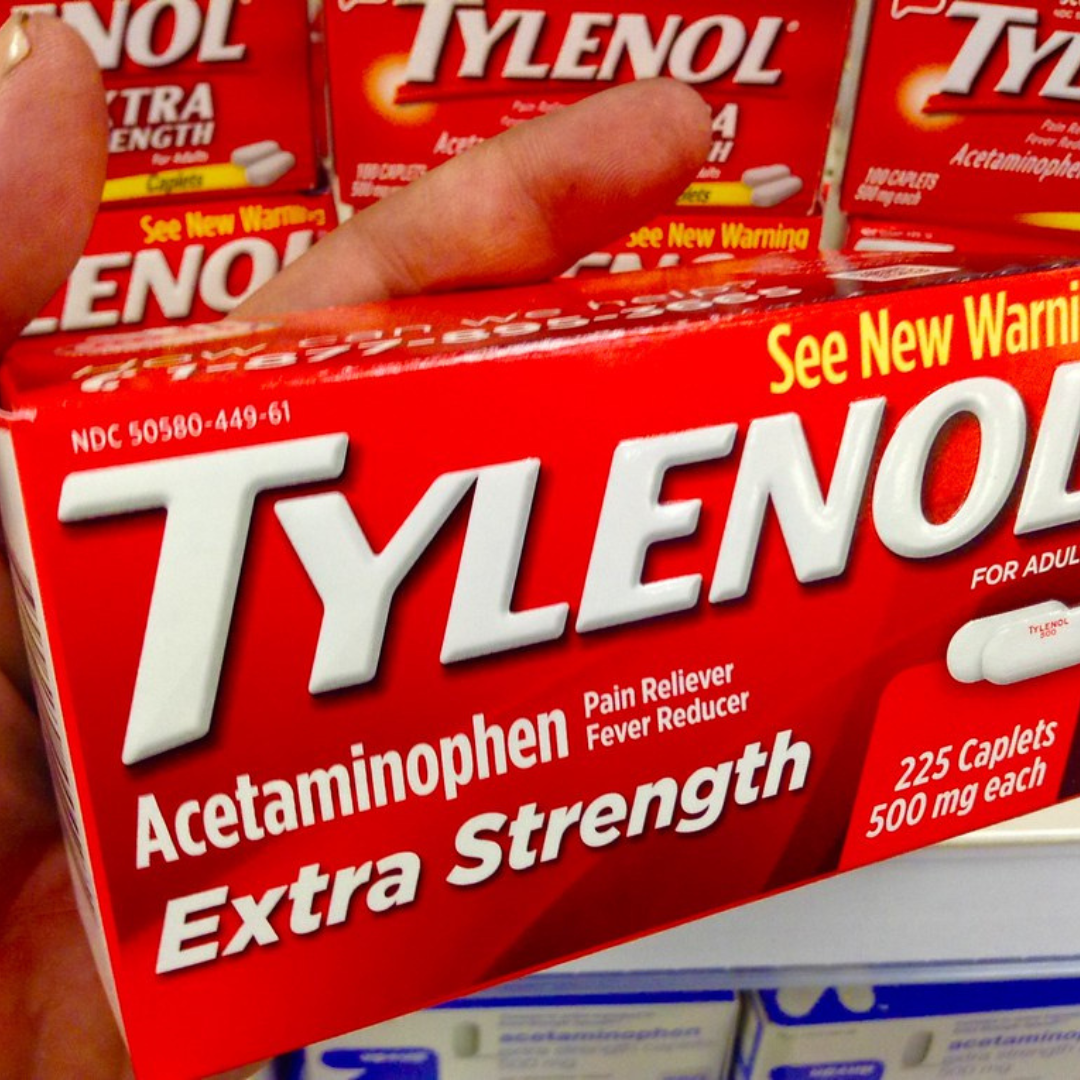
- 2nd Jul 2023
- 06:03 am
I. Introduction
A. Overview of Tylenol and its reputation prior to the 1982 scandal
Johnson & Johnson (J&J) developed Tylenol, a popular and effective over-the-counter pain reliever, prior to the 1982 incident. For its efficiency, safety, and dedication to customer health, Tylenol had built a solid reputation.
B. A brief history of the Tylenol poisoning episode and its importance
In the history of product safety and crisis management, the Tylenol poisoning incident of 1982 was a pivotal moment. It entailed the deliberate cyanide manipulation of Tylenol capsules, which caused numerous deaths and aroused fury and dread across the country.
II. The Tylenol Poisoning Incident
A. Description of the incident and the finding of Tylenol pills laced with cyanide
The event started when many people in the Chicago region died after taking tampered-with, cyanide-laced Tylenol capsules. After the victims passed away, the contamination was found, and it was found that different retail outlets were where the tampering took place.
B. Prompt responses from Tylenol and Johnson & Johnson (J&J)
J&J and the Tylenol brand acted swiftly and forcefully after learning of the poisoning. All Tylenol capsules were recalled nationally, with an estimated value of over $100 million. J&J stopped all production and advertising, and they gave law enforcement and government investigators their full cooperation.
C. public reaction to the occurrence and media coverage of it
The Tylenol poisoning episode attracted a lot of media attention and sparked broad public anxiety. Concerns concerning product tampering and consumer protection were brought up in the news reports and conversations about the safety of over-the-counter medicines.
III. Crisis Management and Response
A. Crisis management plan and decision-making procedure at J&J
J&J used an open and proactive approach to crisis management. They made it very obvious that their first priority was safeguarding the welfare of their clients while also placing a high priority on public trust and consumer safety. J&J swiftly informed the public of any updates and information and gave advice on the product recall.
B. Implementation of a nationwide product recall
An essential first step in resolving the situation was the widespread product recall of Tylenol capsules. Even though the tampering was restricted to particular regions, J&J showed its dedication to consumer safety by voluntarily removing all potentially compromised items from the market. This recall raised the bar for corporate accountability and demonstrated J&J's commitment to placing public health first.
C. Cooperation with government and law enforcement organizations
J&J actively worked with law enforcement organizations, such as the FDA and the FBI, to look into the instances of tampering. In order to help identify the offenders and stop similar instances in the future, they offered their full support and supplied information.
Overall, J&J's prompt and thorough crisis management reaction was extremely important in minimizing the harm brought on by the Tylenol poisoning episode. Their activities established a standard for business crisis management and had a long-lasting influence on consumer protection laws and product safety rules.
IV. Rebuilding Trust and Restoring the Brand
A. Public relations initiatives that are transparent and focused on communication
Throughout the crisis, J&J and the Tylenol brand prioritised open communication and openness. They conducted interviews, gave interviews, and staged press conferences to give continuous updates on the situation. By keeping the lines of communication open, J&J hoped to comfort the public and show their dedication to finding a solution.
B. The implementation of safety precautions and tamper-evident packaging
J&J made extensive modifications to the Tylenol product packaging in response to the package manipulation event. To guarantee the integrity of the packaging and safeguard against any potential tampering, they added tamper-evident seals and other safety measures. To boost customer confidence and rebuild consumer faith in the Tylenol brand, these new safety elements were created.
C. Tylenol product reintroduction and re-launch
J&J concentrated on reintroducing Tylenol to the market after the incident in a way that restored consumer confidence in the product's safety. The new tamper-evident packaging and safety precautions were the focus of significant marketing campaigns. J&J also ran marketing campaigns and offered discounts to entice customers to try the newly reintroduced Tylenol products.
V. Stakeholder Perceptions and Impact
A. Views and opinions of the general public regarding Tylenol and J&J
Fear and mistrust were the early reactions of the public to the Tylenol poisoning tragedy. In resolving the crisis, J&J took prompt and prudent action, which helped gradually restore public confidence. Many customers recognized and valued J&J's dedication to customer safety, which helped to gradually rebuild consumer confidence in Tylenol and the business.
B. The incident's after-effects on sales and market share
Tylenol's sales and market share significantly decreased in the immediate wake of the crisis. The brand was able to bounce back as J&J put safety measures in place and restored trust through efficient communication. Over time, Tylenol reclaimed its place as the most popular over-the-counter painkiller..
C. Influence on the pharmaceutical sector and product safety laws
The Tylenol poisoning episode had a significant impact on the pharmaceutical sector and the laws governing product safety. It caused the industry to scrutinise packaging and safety precautions more closely. To prevent product tampering and improve consumer protection, governments and regulatory agencies also put in place stronger rules and laws.
VI. Legal and Ethical Considerations
A. investigation into the poisoning event and related legal action
The people who were involved in the tampering were found after thorough investigations by law enforcement agencies. The perpetrators were never identified with certainty despite their best attempts. J&J, however, showed their dedication to pursuing justice and holding those guilty accountable by working with the authorities.
B. Ethical dilemmas faced by J&J in handling the crisis
During the crisis, J&J had to make moral judgments about things like whether to reveal specific facts to the public or how to weigh the financial consequences against consumer safety. In the end, their emphasis on customer welfare and their proactive and open behavior were clear indications of their dedication to moral decision-making.
C. Consumer protection and corporate responsibility lessons learnt
The Tylenol poisoning event made it clear how important it is for businesses to protect their customers. It acted as a reminder to businesses to prioritize customer security and take preventative action to avoid repeat incidents. Businesses had to review their packaging, security protocols, and crisis management plans as a result of the incident, which ultimately resulted in better consumer protection and stricter industry rules.
In reaction to the Tylenol poisoning episode, J&J prioritized restoring confidence, putting safety measures in place, and maintaining open lines of communication. As a result of their efforts, the Tylenol brand was not onl but also had a larger effect on the pharmaceutical sector, resulting in better product safety laws. The tragedy serves as a reminder of the crucial role that consumer protection and corporate responsibility play in upholding trust and preserving public health.
VII. Industry and Cultural Shifts
A. How the Tylenol controversy affected product packaging and safety requirements
Not only within the pharmaceutical industry but also throughout other consumer goods sectors, the Tylenol poisoning tragedy had a significant impact on product packaging and safety regulations. Tamper-evident packaging was extensively implemented as a safety measure to stop product tampering in reaction to the crisis. Companies across a range of sectors realized how crucial it was to safeguard the integrity of their goods and started putting similar security measures in place to guarantee customer safety. The episode also made customers more aware of the importance of exercising caution while buying and using over-the-counter medicines and other items.
B. The long-term effects on how the pharmaceutical business views consumer safety
The pharmaceutical industry's approach to consumer safety underwent a substantial change as a result of the Tylenol incident. Before the event, little focus was placed on tamper-proof packaging and safety precautions. The disaster did, however, act as a wake-up call, forcing pharmaceutical firms to prioritize product safety and make investments in the development of secure packaging options. To establish and follow tight safety regulations, the industry began collaborating more closely with regulatory bodies. The incident's long-lasting effects made sure that consumer safety was given top priority in the production and distribution of drugs.
VIII. Lessons Learned and Best Practices
A. Principal lessons learned from the Tylenol scandal case study
A case study on the Tylenol crisis offers some insightful lessons for companies confronting crises. The value of prompt and open communication in times of crisis is among the most important teachings. The quick response and transparent communication by Johnson & Johnson contributed to the growth of consumer and stakeholder trust. The case study also emphasises how important it is to put customer safety ahead of commercial considerations. Even though it suffered significant financial losses, J&J's move to recall all Tylenol products showed a dedication to customer welfare.
B. Best practises for managing crises and preserving brand reputation
Businesses can learn a number of best practises for crisis management and safeguarding brand reputation from the Tylenol case study. A well-thought-out crisis management plan with specified communication routes and spokespersons is one of these. Acting swiftly and decisively is essential, along with accepting responsibility for the predicament and displaying a sincere desire to find a solution. Maintaining openness and credibility can be aided by open contact with the general public, the media, and stakeholders. Additionally, companies must spend money on preventative measures like tamper-evident packaging to stop disasters before they start.
IX. Conclusion
A. Case study summary of the Tylenol 1982 scandal
In the history of crisis management and consumer protection, the Tylenol 1982 controversy continues to be a defining moment. The incident damaged Johnson & Johnson's reputation and made it difficult for them to handle the crisis successfully. Their actions established a standard for handling crises and served as an example of how crucial consumer safety and moral decision-making are.
B. Concluding remarks on the incident's long-term effects and legacy
The Tylenol poisoning incident has had a lasting effect on consumer protection laws and product safety regulations across industries. To protect consumers from potential harm, it brought about a cultural shift that made tamper-evident packaging a standard practice. The incident also highlighted how important corporate accountability is in times of crisis.
C. Thoughts on the value of crisis management and preserving customer confidence
The Tylenol case study highlights the value of crisis management in protecting brand reputation and upholding consumer trust. To successfully navigate through difficult situations, businesses must put the safety of their customers first, act honestly and transparently, and deal with crises before they arise. They can develop enduring trust and fortitude in the face of difficulty by doing this.
Meet the author of the Blog
Ajinkya
Ajinkya brings a plethora of knowledge and experience to the table with his Ph.D. in Finance from the esteemed Indian Institute of Technology Delhi (IITD). Ajinkya has more than five years of experience as an economist in a market research company and has accumulated significant hands-on expertise in applying statistical ideas to actual situations. His interests include forecasting financial time series, accounting, economics, econometrics, and finance. Ajinkya is a dependable source for thorough and precise statistical solutions, boasting a stellar average rating of 4.8 and an impressive track record of completing 1861 assignments successfully.








